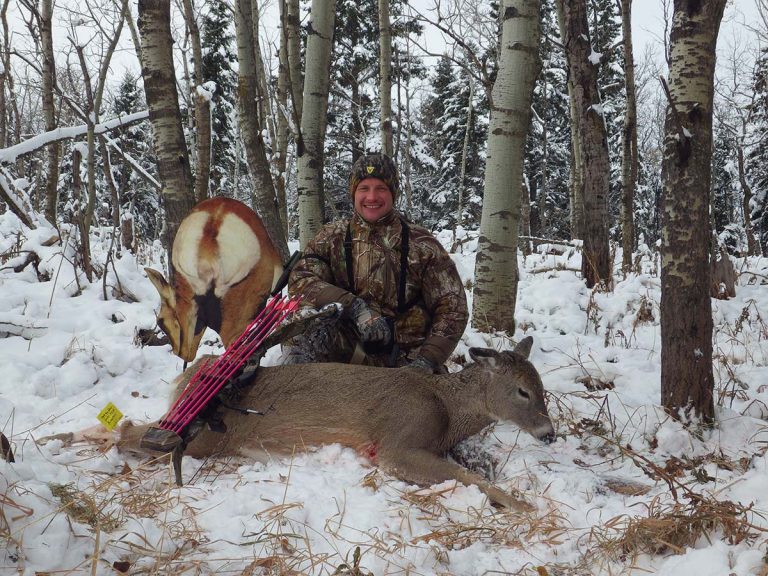Effective visual confirmation tactics to lure bucks in close use the best deer decoys.
Gear List: The author in this article swears by the Montana Deer Decoys (click to shop)
Using a decoy in your hunting setup can improve your chances but only if used correctly. Decoys draw animals in close that would have otherwise passed by out of range. Decoys provide visual reassurance for incoming deer that are investigating noises or commotion. Once a deer spots a decoy, it focuses its attention on it rather than you and this can really increase your chances of getting a shot off undetected. The key to effective decoying is to set up a timely realistic situation correctly in the location that you are expect the deer to come from and paying attention to the wind direction.

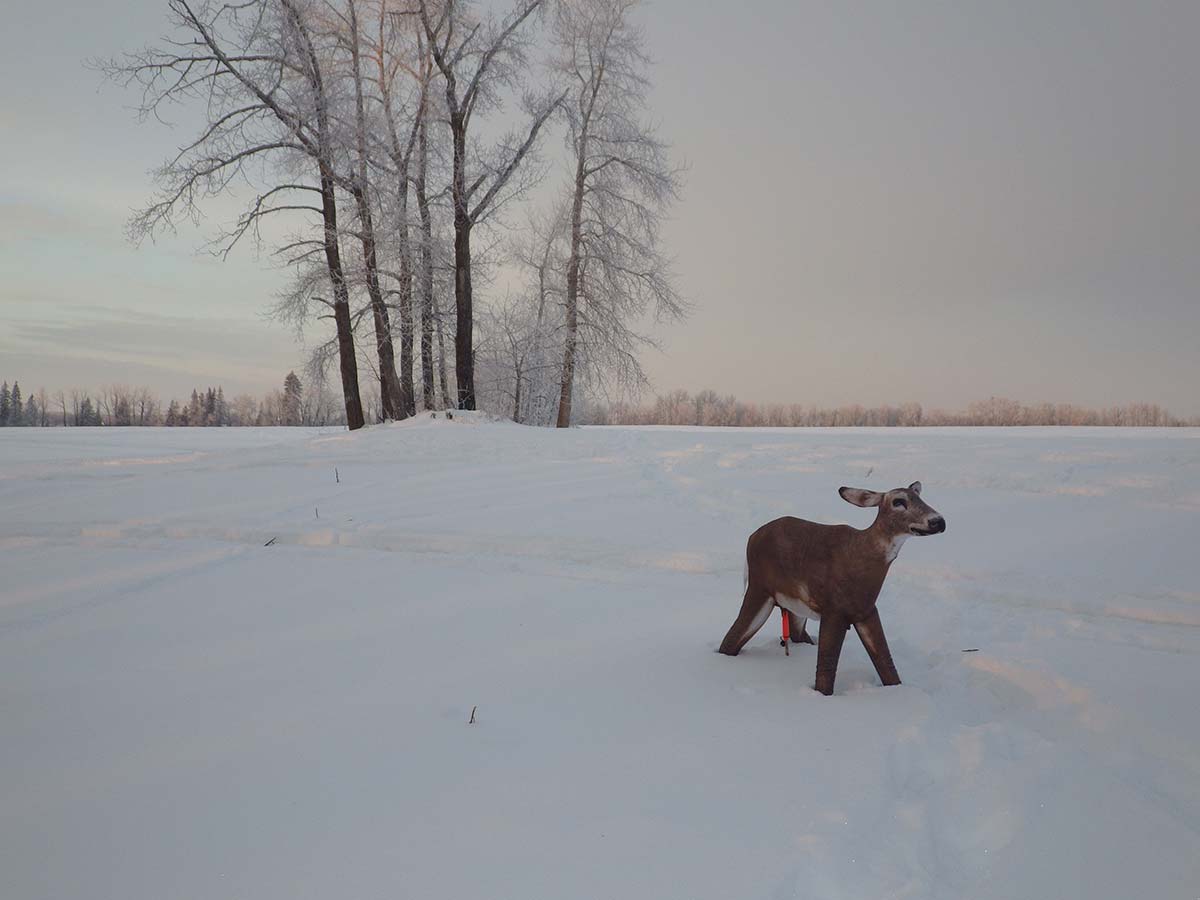
Although not always possible it’s great to know where and when the deer will be coming from. This information allows you to choose and set up a realistic scenario that makes sense for the area and time of year. I usually set up either a lone buck, a buck tending a doe, two bucks or a single doe. The deciding factor on how many deer I set up or which sex is the time of year. During the pre-rut, which runs approximately during the last week of October and the first week of November, I set up a doe and buck combination of decoys. If I were to use a single decoy during this time it would be a buck decoy. I find that bucks are competitive during this pre-rut phase and I witnessed them coming over to check out any intruders in their area. It’s harder to get them to leave a doe they are following to check out another lone doe. I have used a single doe decoy in the past and it can attract deer during all stages of the rut, however, there’s usually one deer that’s more intrigued than the others and it eventually figures out that the decoy is a fake and snorts at it, ruining the hunt.
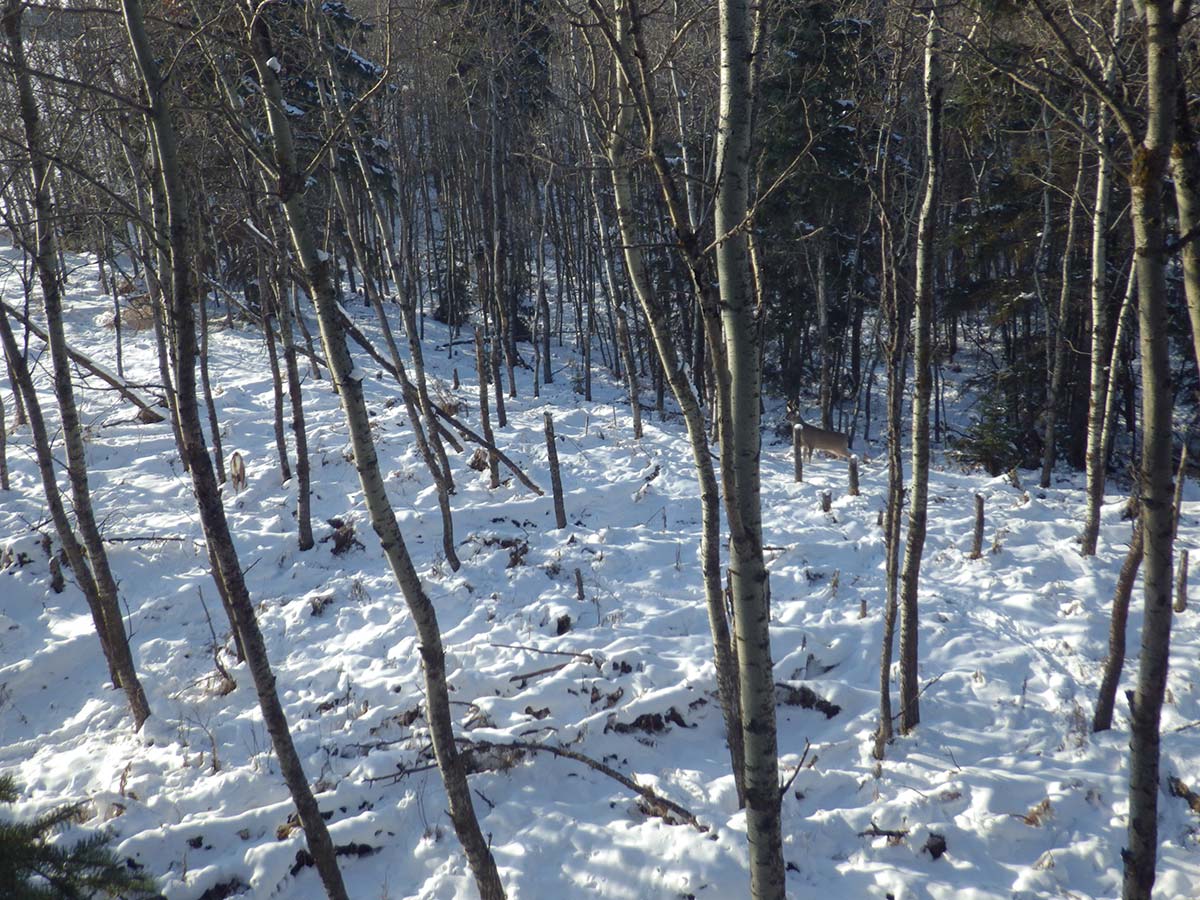
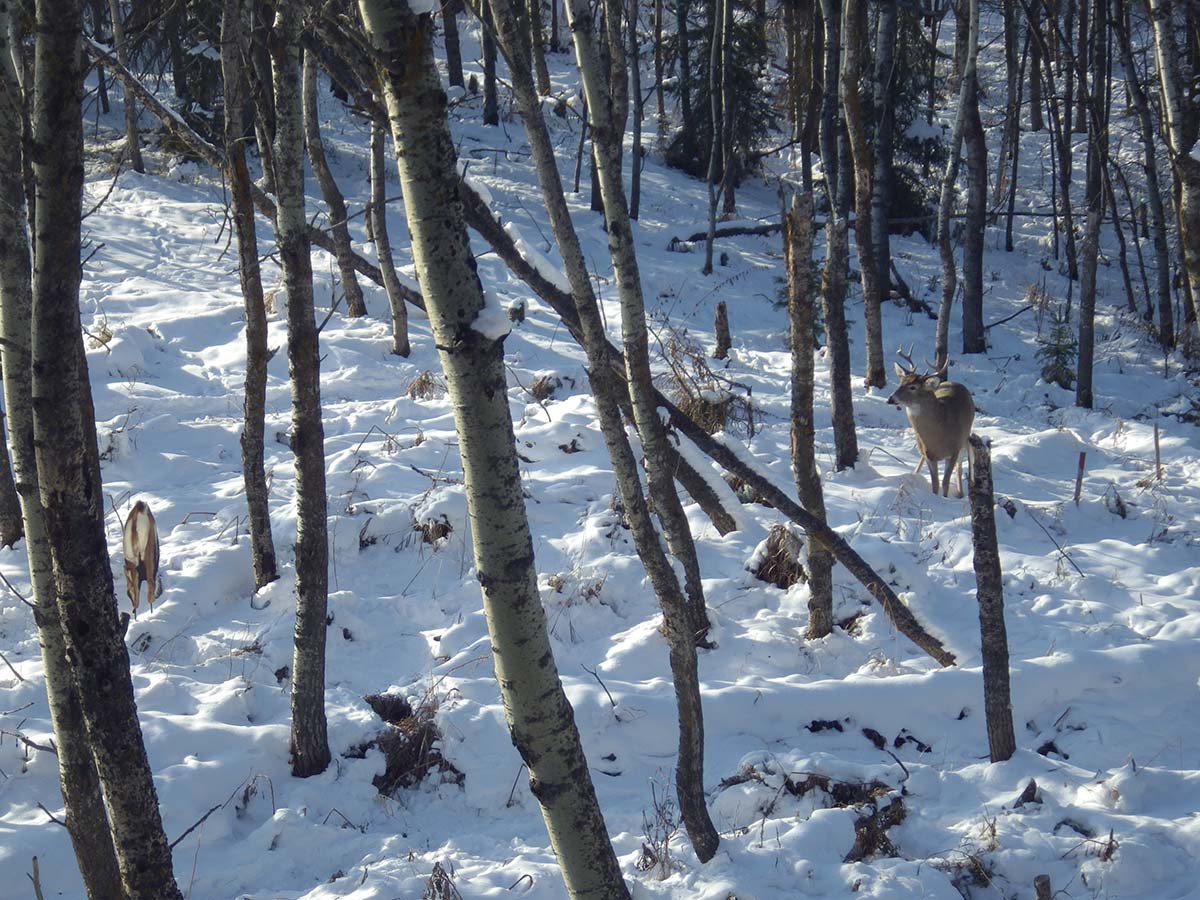
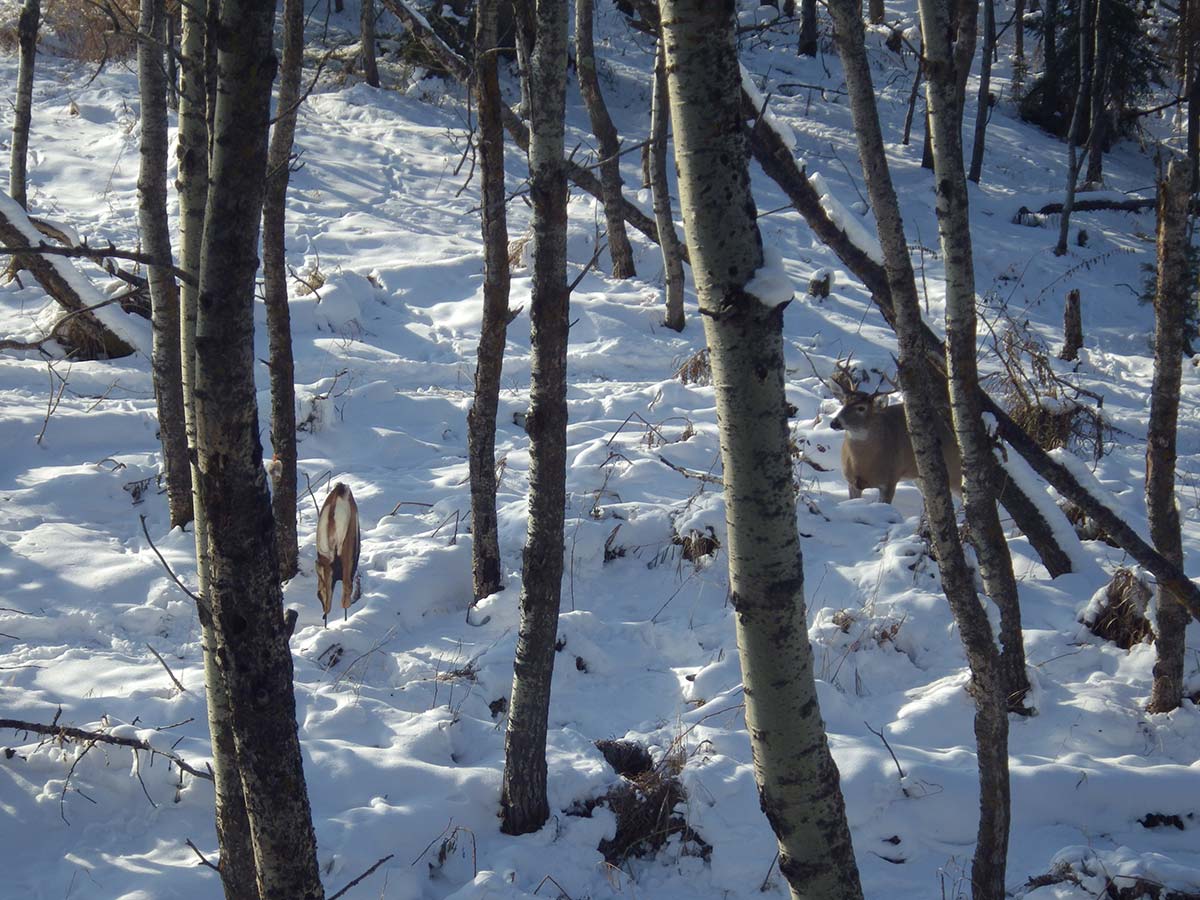
An important part of setting up a realistic situation with decoys is ensuring the decoys smell nothing like you. I spray odor killing on all my decoys and never apply deer scents directly to them. Nothing will send a deer running in the other direction if your decoy smells like something it should not. When using silhouette type decoys, instead of full bodied decoys I make sure to position them at an angle that I think the deer will first spot them. There is not much to see when looking at the 2D decoy from the back, the broadside orientation is what works.
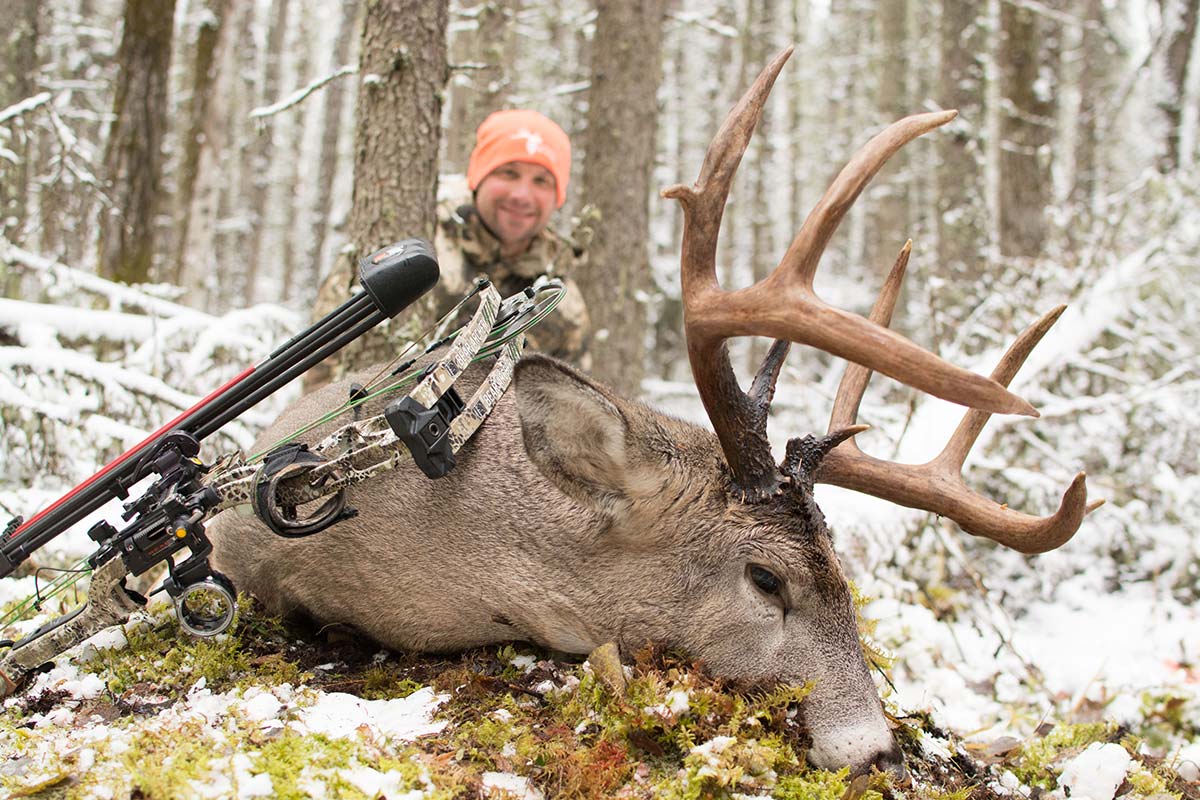
Deer are usually okay being in the vicinity of other deer but during October and November each year they increase their social activity because of the breeding that occurs because they are most eager to get together. During the latter part of November or post-run which is from mid-November onward, I do set up a lone doe decoy because at that time deer will travel across a lot of ground checking out any and all does in the areas to see if they still need to be bread. Competition usually isn’t so fierce at this time. Regardless of the time of year or setup I have, in order to attract incoming dear that are nearby but out of sight I tend to make applicable noises such as grunting or rattling or simply breaking twigs or branches. Deer will come to check out other deer that they hear and then when they see the decoy it’s the last piece of confirmation or security they need to know that another deer is nearby.
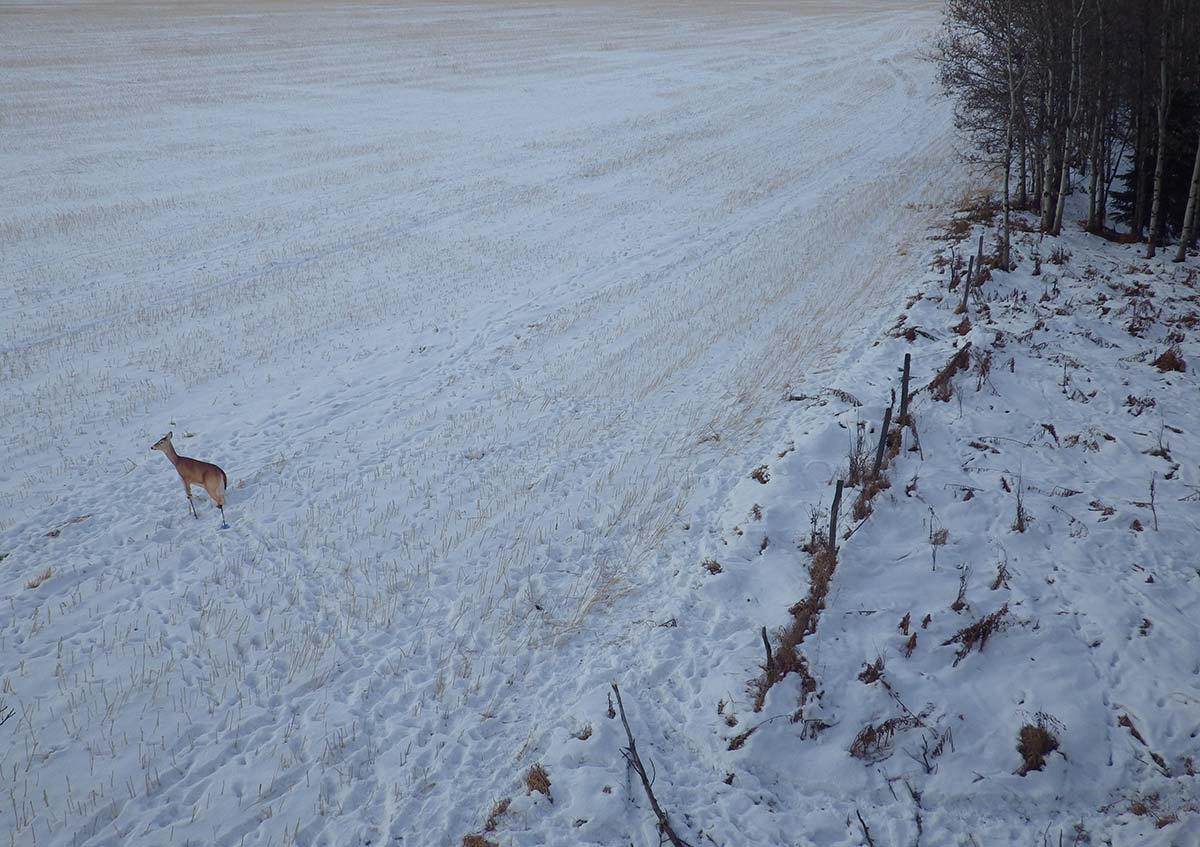
The wind direction always dictates how I position myself and the decoy and in which direction I face the decoy. In recent years I have added a lightweight white fabric to the rear end of my decoy to simulate a white-tailed deer tail. With small wind gusts, it moves simulating the tail flick you often see when deer do not feel threatened. If I’m setting up a doe decoy I will set up for a shot 30 yards downwind of the doe with her facing away from me. Any incoming deer will likely circle around down when wanting to sniff the rear end of the doe. In contrast, if I’m setting up a buck decoy and I am hunting bucks I will again set up 30 yards downwind of the buck decoy but I’ll face the buck towards me. Any incoming challenger bucks want to approach head on in order to size up their opponent before engaging in a rattling battle. If I’m using both a buck and doe decoy, I’ll place them close together but again I’ll have the doe facing away from me and the buck looking towards me and once again I’ll be set up for a shot 30 yards downwind of them. understanding where deer travel and the wind direction are only the first two parts of a solid setup to use a decoy. The most important part about a decoy setup is the placement (or location) of the decoy.
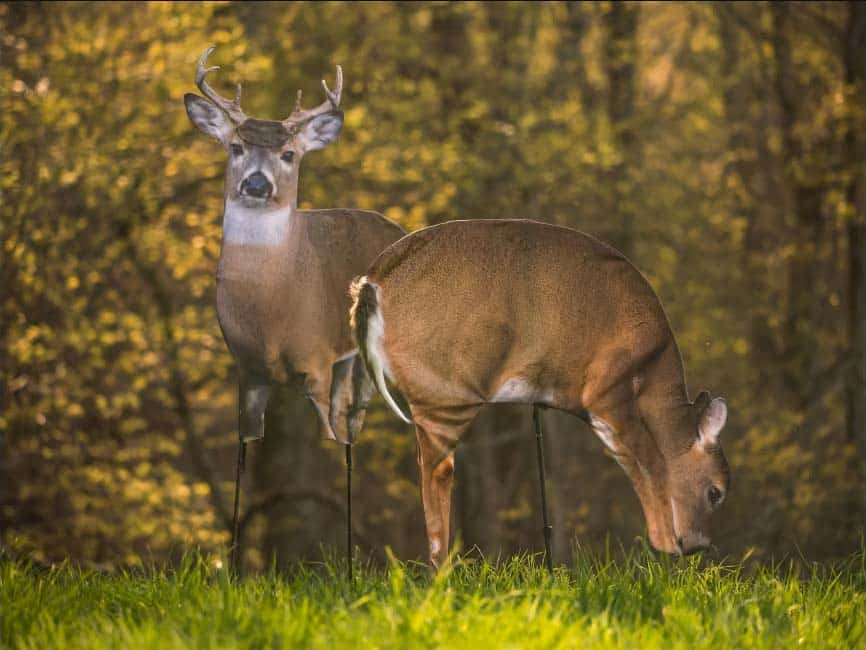
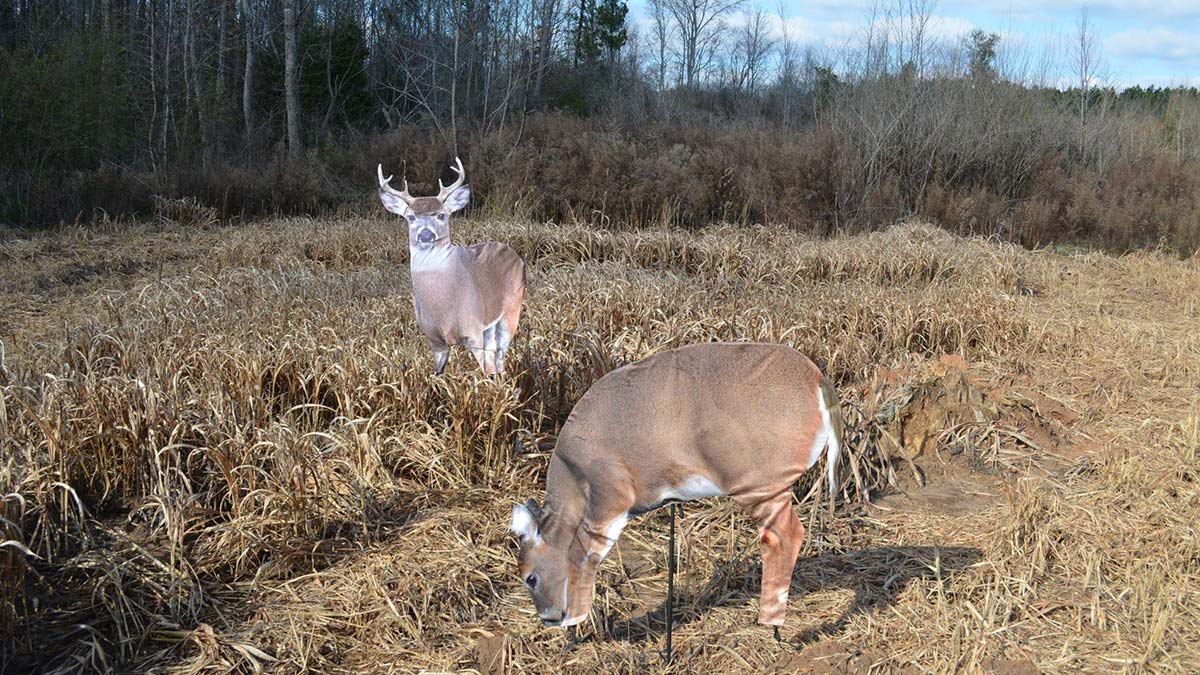
| 3D decoys offer the most realistic representation of a deer, from any angle. However, I have been known to also carry Montana decoys because they work so well when I have to travel a distance into my stand. Montana decoys, 2D silhouettes have a realistic picture of a deer printed on weather proof fabric that does an excellent job simulating a deer. Either way, I am extremely cautious to avoid contaminating my decoys with any scent, which includes deer scent. The reason to avoid soaking your decoy with deer scent is that, effective scents change throughout the season. A decoy with estrus scent all over it will only work a small portion of the season, other times it will spook deer because that scent is not natural for that time of year. A second reason to keep your deer decoys scent free is that you’ll be handling them and you yourself should not smell like a deer, you should be a close to scent free as possible. When not in the field, I keep my decoys in my scent crushing clothing locker. When in the field, I hang any appropriate scents from the decoy, underneath. |
Setting up a decoy in the wrong place not provide a shot or furthermore, it can spook deer and send them running which is the exact opposite of what you’re trying to accomplish. You want deer to be able to see the decoy from afar and avoid surprising them. Deer consistently travel cautiously through the woods and if you set up a decoy in thick bush other live deer will not be able to see it. Ideally, you want to set up a decoy along a field edge, in an open meadow or in a cut so that deer can see it from a far distance. I personally love to set them up on field edges because it doesn’t matter where a deer enters the field they can look around and see the deer and come to visit. One thing I’m always very careful of when setting up either a decoy is keeping the smell off the decoy, but in the same location. This is very important as deer expect to smell what they see so putting scent in another spot and without a deer will raise an issue of concern for them. Or if they are downwind of the decoy and do not smell something that is deer related, it puts them into a high alert. I always hang my estrus smell underneath the back legs of my decoy it makes the most sense and it’s in the right location, invisible and doesn’t contaminate my decoy. It’s also important to hang the correct scent on the decoy. It makes no sense to have a dominating buck scent underneath a doe type decoy. Make sure you keep things real. Anything that is out of the ordinary will cause deer to go on alert.
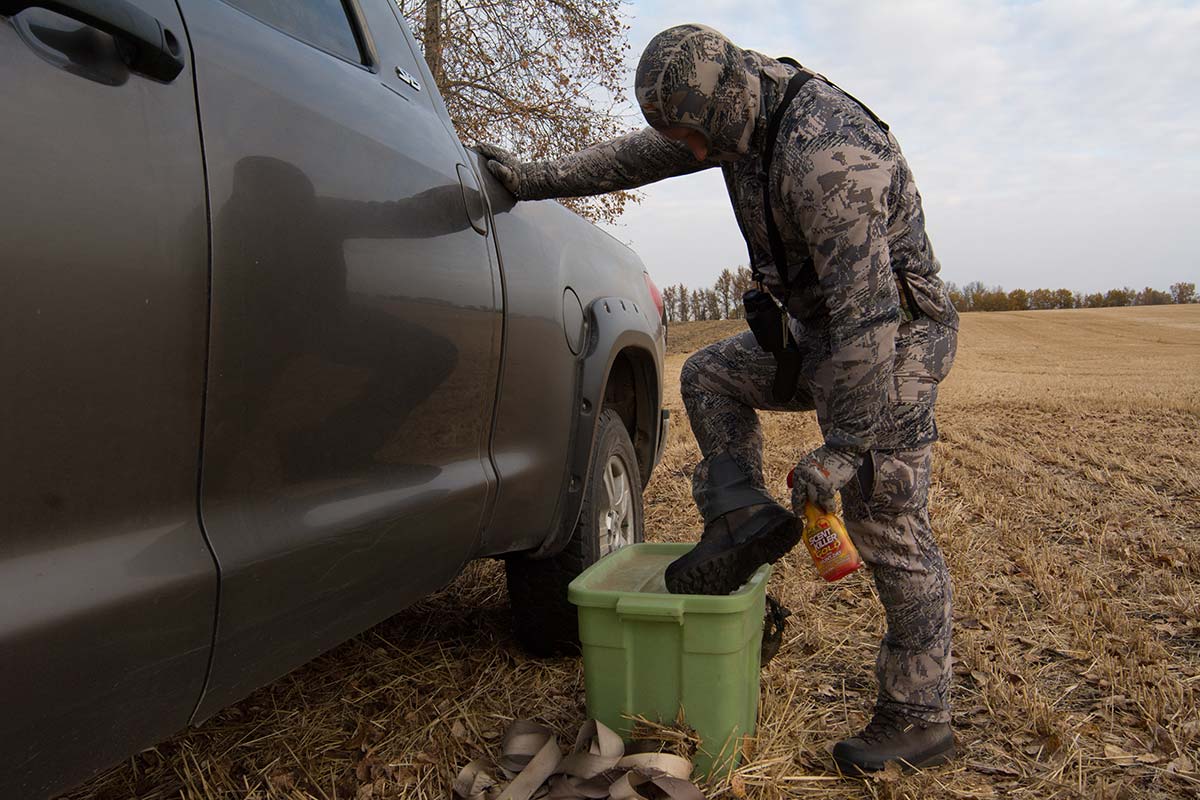
These days it’s pretty rare that I don’t set up a decoy when I’m hunting for deer. A realistic situation is key for the time of year and decoys you have setup. Positioning your decoy and yourself for a shot as per the wind direction is most important. Select a good location along well-defined travel routes of the deer with good visibility will ensure success.

Per our affiliate disclosure, we may earn revenue from the products available on this page. To learn more about how we test gear, click here.



